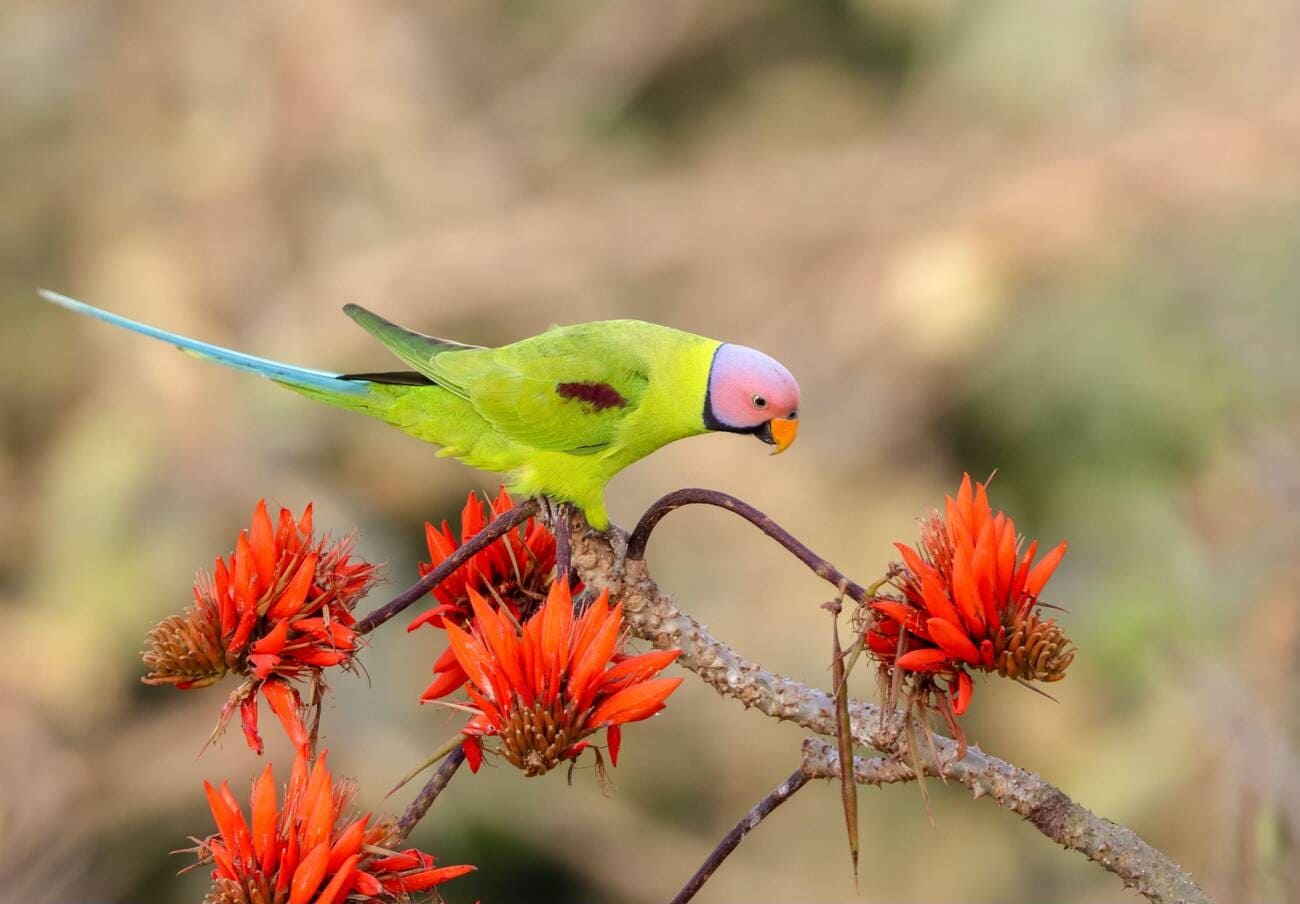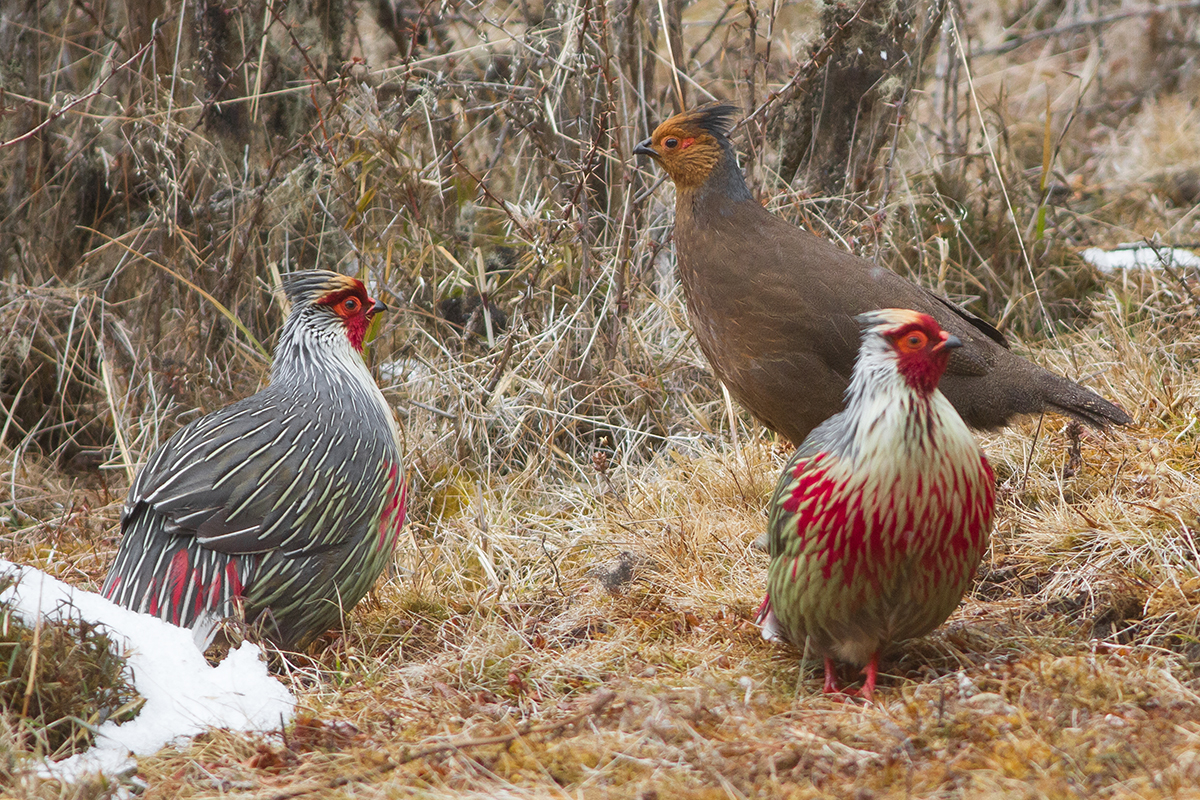Bhutan, known for its rich biodiversity, is a true paradise for bird lovers and ornithologists alike. The Kingdom’s varied ecosystems, ranging from subtropical lowlands to the towering peaks of the Himalayas, offer an incredible diversity of habitats. Over 774 species of birds have already been recorded, with many more yet to be discovered. Bhutan’s birding opportunities are unrivaled, making it a must-visit destination for anyone with an interest in wildlife and nature.

The country’s varied altitudes and climates—ranging from tropical forests to alpine tundra—create ideal conditions for numerous bird species. With a combination of moist climates and a vast range of altitudes, Bhutan provides a perfect environment for birds. From lush tropical jungles to temperate forests and alpine regions, these habitats support over 800 species of birds. Among them are some of the most rare and exotic species found in the eastern Himalayas. Bhutan is home to ten species of birds that are critically endangered, such as the Black-Necked Crane, which traditionally winters in the Phobjikha and Bomdeling valleys.
In addition to the resident species, Bhutan is also a vital stopover for migratory birds. Hundreds of species travel between breeding grounds in Central Asia and wintering areas in the subcontinent. This migration brings even more variety to Bhutan’s birdlife, making it a prime destination for bird watching throughout the year.
Best Time for Birding in Bhutan
The spring months, from March to May, are the best time to visit Bhutan for birding. During this period, bird migration is at its peak, and visitors are likely to encounter a vast variety of bird species. This time of year is particularly popular with birders, and the Kingdom sees an influx of visitors hoping to catch a glimpse of the migrating birds. However, although the number of species encountered is greatest in spring, birding during the early winter months can also be quite rewarding.

Winter in Bhutan offers an opportunity to see some rare species that are not easily spotted during other times of the year. For instance, the Black-Necked Crane, one of the most iconic birds of Bhutan, migrates to its summer habitat in Tibet by mid-March. However, it is a guaranteed sighting from late October to mid-March when it winters in Bhutan. The White-Bellied Heron, one of the rarest birds in the world, is another species that is more likely to be seen in the winter months, as it is busy nesting and raising young in the spring. Other sought-after species, such as the Ward’s Trogon, Rufous-Necked Hornbill, and the Beautiful Nuthatch, are residents and can be seen year-round.
Despite the seasonal variations, Bhutan offers an exceptional birding experience throughout the year. Whether it’s the spring migration or the quieter winter months, birdwatchers are guaranteed to encounter a range of species. Bhutan is also known for providing the rare opportunity to witness large flocks of certain bird species. For example, golden-breasted fulvettas, which are considered rare in other parts of the world, have been seen flying in flocks of 25 or more. Similarly, hundreds of laughing thrushes may be spotted together, making for an incredible birding experience.
Top Birding Locations in Bhutan
One of Bhutan’s unique features is its varied topography, which makes it easy for birders to access a wide range of habitats. Whether you’re exploring lowland subtropical forests or high-altitude alpine meadows, birding in Bhutan is an experience that can be enjoyed in various ways. The country’s steep, rugged terrain is complemented by easily accessible roadways, allowing bird watchers to explore the diverse birding sites with minimal effort.
Birding in Bhutan often takes place from roadside stops, where visitors can scan the landscape for birds on either side of the road. Imagine stopping at a picturesque spot, scanning the shrubs and treetops on one side of the road, and then turning to observe the canopy on the other. The vertical nature of Bhutan’s landscape allows for this type of birding experience, where bird watchers can spot a range of species from a single viewpoint.

Short walks along old footpaths also offer fantastic opportunities for birding in the quieter corners of Bhutan’s vast landscapes. These peaceful trails provide an excellent way to encounter bird species in a more intimate setting. For those seeking more in-depth experiences, multi-day treks into the higher altitudes or lower elevations provide a deeper immersion into Bhutan’s rich birdlife. Whether trekking through lush forests or across alpine meadows, these longer excursions offer unparalleled birding experiences that few other destinations can match.
Among the top birding locations in Bhutan are the valleys of Phobjikha and Bomdeling, which are known for their high concentrations of migratory birds, particularly the Black-Necked Crane. The Jigme Dorji National Park, the Royal Manas National Park, and the Bumthang Valley are also top spots for bird watching, each offering a different array of species in their distinct habitats.
In addition to these well-known birding spots, Bhutan is filled with lesser-known areas that offer just as much diversity in bird species. With a little exploration, birders can discover new and exciting locations that are less frequented by tourists, allowing for a more serene and uninterrupted birding experience.
Conclusion
Bhutan’s unparalleled biodiversity and rich birdlife make it a dream destination for birders from all around the world. Whether you’re visiting during the peak migration season in spring or taking advantage of the quieter winter months, Bhutan offers a birding experience that is as diverse as it is spectacular. With over 800 bird species, including rare and endangered species like the Black-Necked Crane and the White-Bellied Heron, Bhutan is a sanctuary for bird lovers. The country’s varied topography and easy access to a range of habitats make birding here a unique experience, whether from roadside stops or during multi-day treks into the heart of the kingdom. Bhutan’s birding opportunities are not just about observing different species; it is about immersing yourself in one of the most beautiful and biodiverse countries in the world.

